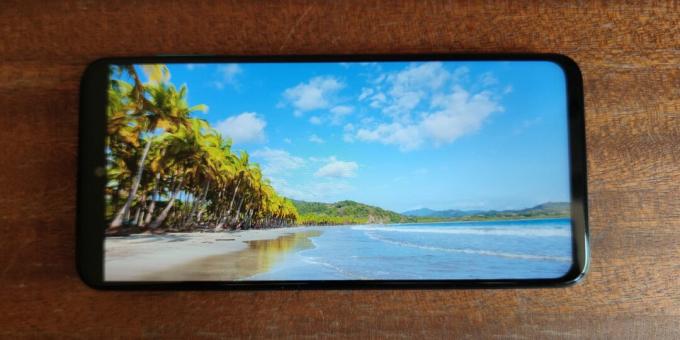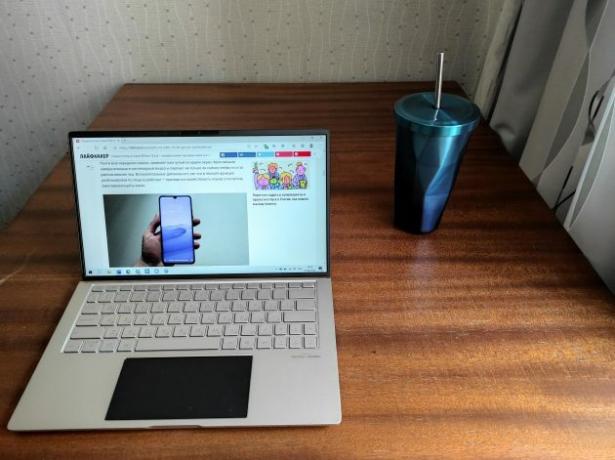Review of Redmi Note 9 Pro - an inexpensive smartphone with gaming hardware
Devices / / January 06, 2021
In 2019, Xiaomi rewrote the game in the low-cost smartphone segment with the Redmi Note 8. The company soldXiaomi Redmi Note 8 was the must-have Android at the end of 2019, data shows 30 million devices and it's hard to beat. Will Xiaomi itself be able to do this with the Redmi Note 9 Pro?
Table of contents
- Specifications
- Design and ergonomics
- Screen
- Software and performance
- Sound and vibration
- Camera
- Autonomy
- Outcome
Specifications
| Platform | Android 10, MIUI 11 firmware |
| Display | 6.67 inches, 2,400 x 1,080 pixels, IPS, 60 Hz, 405 PPI |
| Chipset | Qualcomm Snapdragon 720G, Adreno 618 video accelerator |
| Memory | RAM - 6 GB, ROM - 64 GB (support for memory cards up to 512 GB) |
| Cameras | Primary: 64 Mp, 1 / 1.72 ″, f / 1.9, PDAF; 8 MP, f / 2.2, 119˚ (wide-angle); depth sensor - 2 Mp; camera for macro photography - 5 megapixels. Front: 16 MP, 1 / 3.0 ″, f / 2.5 |
| Communication | 2 × nanoSIM, Wi-Fi 5, GPS, GLONASS, Bluetooth 5.0, NFC, GSM / GPRS / EDGE / LTE |
| Battery | 5,020 mAh, fast charging (30 W) |
| Dimensions | 165.8 x 76.7 x 8.8 mm |
| Weight | 209 gram |
Design and ergonomics
The novelty has received a recognizable appearance: it is given individuality by a square block of cameras and an unusual back. Otherwise, we have a typical smartphone 2020 with a glass body, bezel-less display, smooth edges and corners. The gadget is available in three colors: "white iceberg", "stardust" and "green tropics". We tested the last option.

On the front side of the device there is a protective Gorilla Glass 5 with an oleophobic coating. The side frame is plastic, there is a black edging between it and the glass, smoothing the transition. The front camera is inscribed in the middle of the top line of the screen.
On the right side there are volume keys and a power button with a fingerprint scanner. The latter is convenient for right-handersbecause the thumb rests directly on the scanner pad. Lefties need to use their other hand to unlock.

It is also worth noting that the volume buttons are placed too high, which is why the smartphone has to be intercepted. And given the slippery hull, these actions are always risky.
On the left is a hybrid slot for two SIM cards and microSD. At the bottom there is a multimedia speaker, USB Type-C and an audio jack.
Screen
Almost the entire front side is occupied by a 6.67-inch IPS-display with a resolution of 2,400 x 1,080 pixels. Considering the classic pixel structure, 395 PPI is enough to not see ladders or looseness in small print. The screen is sharper than many AMOLED flagships.

Nevertheless, the matrix falls short of the flagship level. Contrast is not the highest: backlight makes blacks slightly faded. Otherwise, we have a high-quality screen with wide viewing angles, sufficient brightness and accurate color reproduction. The latter, if desired, can be "saturated" in the settings.


To reduce eye strain there is a blue light filter. Also, the smartphone is suitable for those users who do not accept OLED screens due to backlight flickering caused by pulse width modulation. In IPS, a different method of brightness control is used, which solves the problem at the root.
Software and performance
Runs Redmi Note 9 Pro running Android 10 with MIUI 11 shell. Xiaomi will update the latest to 12th version, in which icons, animations and applications will be redesigned. In the meantime, we have a nice, but in some places archaic interface, in which corporate elements are not always combined with the Google design code.


The hardware platform is the Qualcomm Snapdragon 720G chipset, made using an 8 ‑ nanometer process technology. It includes eight Kryo 465 cores with big. LITTLE: two efficient ones up to 2.3 GHz and six energy efficient ones (up to 1.8 GHz).
Responsible for the graphics is the Adreno 618 video accelerator. Also, the smartphone received 6 GB random access memory and 64 GB of internal storage. The latter can be expanded using microSD up to 512 GB.
The interface and apps are lightning fast. The performance in games is also sufficient: in World of Tanks: Blitz at maximum graphics settings, the frequency is kept around 45-50 FPS even in loaded scenes.

Sound and vibration
Xiaomi decided not to spoil the user with stereo sound. The only multimedia speaker is located at the bottom. The volume reserve is decent, but the speaker does not differ in high quality: closer to the maximum values, overload is heard, there is no bass at all.
It is clear that one should not expect such impressive speakers as in the Xiaomi Mi 10, but inexpensive OPPO A52 and A72 have already learned how to connect the spoken speaker to the main speaker, thereby achieving a stereo effect. I would like to see something similar here.

But the presence of a 3.5-mm connector pleases. Built-in Qualcomm Aqstic audio codec allows you to enjoy loud and clear sound in your headphones. The smartphone shakes well the overhead Beyerdynamic DT 1350 with an impedance of 80 ohms.
The tactile response is good too. Usually inexpensive Android-smartphones give out weak and indistinct rattling, but here the vibration is clear and very strong.
Camera
Redmi Note 9 Pro has four cameras on the back. The standard module is equipped with a 64-megapixel sensor and can combine four pixels into one, so the output is 16-megapixel frames with less noise and wide dynamic range.

In addition, the smartphone is equipped with an 8-megapixel "width", a 5-megapixel camera for macro shots and a 2-megapixel depth sensor. Front camera resolution is 16 megapixels.
During the day and indoors, the photos are decent, and macro shots are surprisingly good. In the dark, everything is not so great, but the night mode comes to the rescue. In it, the camera does exposure bracketing, combining multiple images into one of the best quality. Front lens does not shine: self-portraits are dim and have limited dynamic range. The only way to prevent blowouts is to force HDR on.

























The video is recorded in 4K resolution with a frame rate of 30 FPS. Electronic stabilization is not available at the same time - it can be turned on at a resolution of 1,080p. The smartphone also shoots Full ‑ HD ‑ video at 60 FPS.
Autonomy
A 5,020 mAh battery is installed inside the gadget. If you don't get carried away with games and shooting, you can get two days of battery life. With more active use, the smartphone asks for charging after a day of use. For an hour of playing World of Tanks: Blitz, the battery runs out by 12%.
The smartphone comes with a 30W adapter. It takes less than an hour to recharge the battery.
Outcome
The Redmi Note 9 Pro will not shake the market like its predecessor did. Of course, the battery is bigger and the hardware is more powerful. However, this is a minor update, which, however, does not make the smartphone bad. For the money, this is one of the more interesting options, especially for mobile game lovers. The smartphone costs 21,490 rubles, and right now it is being sold at a discount of 2,700 rubles. If the gaming capabilities are not important for you, you can safely take the Note 8 Pro and save some money.
Buy
The author thanks Xiaomi for the device provided for testing. The company had no opportunity to influence its outcome.
Read also🧐
- Review of Realme X3 Superzoom - smartphone with 5x zoom periscope and flagship performance
- Review of Xiaomi Mi 10 - the most controversial smartphone of 2020
- Review of Xiaomi Mi Smart Band 4 NFC - fitness bracelet with support for contactless payment



